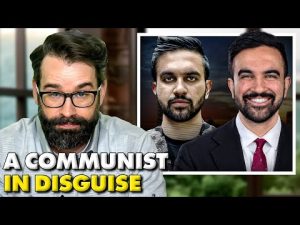**NATO Summit: A Tipping Point Toward War?**
Brett Seagull reports live from the sunny shores of Northern Florida, a safe haven far removed from the chaos of the world. Today, while President Trump races to facilitate peace between Russia and Ukraine, the NATO leaders seem to be revving up for a completely different race—one that looks dangerously like a march toward another global conflict. Amid the booming rhetoric and mounting tension, the question on everyone’s lips is whether we are on the brink of another world war, all while the everyday citizen’s pocketbook bears the weight of these escalating tensions.
As bombs echo across news reports from the NATO summit in the Netherlands, the atmosphere is loaded with urgency. Ukrainian President Zelensky has advanced warnings that Russia is not just targeting Ukraine but is looking keenly at NATO territory. His call for European nations to ratchet up their defense spending to a daunting 5% of their GDP is alarming. It’s not just a friendly nudge; it’s a full-blown push that could ignite a conflagration under the already simmering tensions. This is not merely a defense; it’s a rallying cry for an offensive capability that could lead to catastrophic consequences.
While NATO leaders are diving headfirst into commitments that sound more like a war drum than diplomatic dialogue, President Trump is working diligently to alter the narrative back to peace through strength. His made-in-America approach means fiscal security, focusing on tariffs and domestic supply, but it seems overshadowed by the clamor for military buildup among countries that haven’t felt the grips of war for decades. Trump’s attempts to negotiate peace are a stark contrast to the verbiage of NATO leaders who are seemingly eager to escalate the situation rather than cool it down.
The irony of the situation is hard to ignore: while President Trump is trying to engineer pathways to peace, NATO continues to flaunt its military ambitions with reckless abandon. Reports indicate European nations have pledged over 35 billion euros for military support for Ukraine, with tantalizing promises for even more. This is not merely a financial commitment but an encroachment into a space that could easily lead to a much broader conflict. Each promise made at NATO adds another brick to the wall of tension, raising the stakes and the risks for all involved. It’s enough to make any observer question whether NATO is behaving like a guardian of peace or a provocative force.
As the whirlwind of talks and pledges continues, the broader implications for the world stand exposed. The alignment of rhetoric, driven by NATO leaders’ escalating claims, creates a perfect storm for misunderstanding and potential conflict. If Vladimir Putin’s justification for his invasion was that NATO posed an offensive threat, daily proclamations of defense intensifications and the talk of military integration into Europe only validate his narrative. The danger lies in the growing belief that the masses are being maneuvered like pawns in a chess game, with global powers playing for stakes that no ordinary citizen chose to gamble.
In a world teetering on the edge of conflict, it’s essential to weigh the ramifications of NATO’s trajectory. With so much at stake—such as the lives of our children and the futures of countless nations—shouldn’t the world leaders prioritize diplomacy over bravado? As many ask today, should America step back from NATO if their agenda pressures for war with Russia? Perhaps it’s time to keep a keen eye on these developments, all while hoping for a path that avoids the dark shadow of war. It’s a complex scenario unfolding, where the stakes couldn’t be higher and the balance more precarious.







